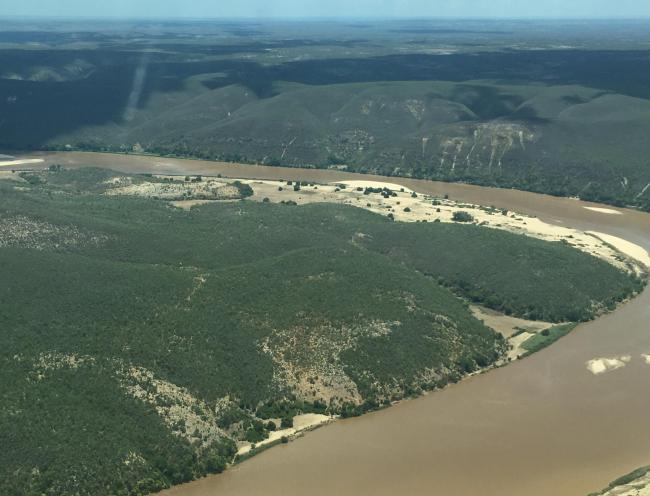Zones humides de l'Onilahy
Zones humides de l'Onilahy
- Country:
- Madagascar
- Site number:
- 2304
- Area:
- 42,950.0 ha
- Designation date:
- 22-05-2017
- Coordinates:
- 23°30'48"S 44°02'45"E
Carousel
CarouselMaterials presented on this website, particularly maps and territorial information, are as-is and as-available based on available data and do not imply the expression of any opinion whatsoever on the part of the Secretariat of the Ramsar Convention concerning the legal status of any country, territory, city or area, or of its authorities, or concerning the delimitation of its frontiers or boundaries.
The Site is located in the Amoron’i Onilahy Protected Area in the south-west of Madagascar. It covers a 75-kilometre stretch of the lower Onilahy River, and features the adjacent valleys, rivers and channels, lakes, marshes and swamps, as well as gallery forests from the Mahafaly Plateau and the Belomotra Plateau on each side of the river. The Site is notable for the high degree of heterogeneity of its habitats as well as the rate of endemism of its unique flora and fauna. It provides key habitats for a wide range of animal species: 27 mammals are listed, including six endemic lemurs such as the endangered Lemur catta and Propithecus verreauxi; 56 reptile species including crocodiles, amphibians and two species of freshwater turtles; 79 bird species including the endangered Ardeola idae and Ardea humbloti; and the recently identified toadfish Allenbatrachus meridionalis. The wetlands are directly threatened by the expansion of agriculture and indirectly by the production of charcoal upstream, which promotes erosion. WWF supported the establishment of the Protected Area and has helped local resource-dependent communities identify alternative sustainable livelihoods.
Administrative region:
Sud-Ouest
National legal designation:
- Aire protégée - Sud-Ouest
Last publication date:
29-05-2017
Ramsar Information Sheet (RIS)
- MG2304RIS_1705_fr.pdf
- MG2304_map170331.pdf
- MG2304_map170508.pdf
- MG2304_taxo170327.pdf
- MG2304_mgt170327.pdf
Site map
Additional reports and documents
Taxonomic lists of plant and animal species occurring in the site
Site management plan
Other published literature










